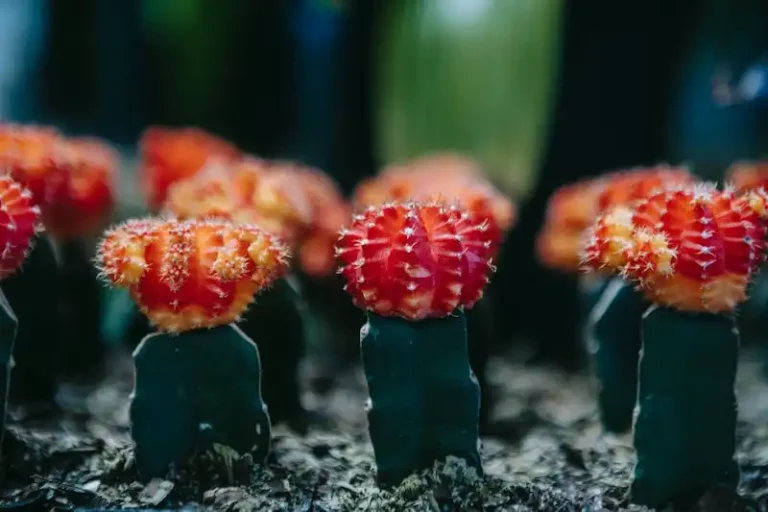The Yucca plant is a beautiful and versatile plant that can be found in gardens all over the United States. There are many different varieties of Yucca plants, each with their own unique characteristics. In this article, we will explore 8 Yucca plant varieties and learn about their distribution and characteristics.
One of the most well-known Yucca plant varieties is the Yucca filamentosa, also known as the Adam’s needle or the needle palm. This plant is native to the Southwest United States and produces beautiful white flowers in the summer. It is known for its narrow, spiky foliage and can withstand harsh winter conditions.
Another popular Yucca variety is the Yucca rostrata, also known as the beaked Yucca or the Big Bend Yucca. This plant is native to the West Texas and New Mexico regions and is characterized by its long, slender leaves and tall stature. It produces beautiful white flowers in the summer and has a taproot that can reach several feet down into the ground.
The Yucca baccata, or the Banana Yucca, is another variety that is commonly found in the southwestern United States. This plant is known for its large, fleshy fruit that can be eaten raw or cooked. It has silver-gray foliage and can tolerate a wide range of soils.
The Yucca cernua, or the small soapweed, is found primarily in the Great Plains region of the United States. This variety has narrow, flexible leaves and produces clusters of white flowers in the summer. It is known for its ability to withstand extreme temperatures and drought conditions.
Next, we have the Yucca glauca, or the soapweed Yucca. This variety is found in the central and western parts of the United States and is characterized by its blue-green foliage. It produces clusters of white flowers in the summer and has a taproot that can extend several feet into the ground.
The Yucca recurvifolia, or the curve-leaf Yucca, is a popular ornamental plant. It is native to the southeastern United States and has long, arching leaves and tall flower spikes. It is evergreen and can withstand hot and humid conditions.
The Yucca torreyi, or the Torrey Yucca, is a rare and endangered species found in the Chihuahuan Desert of west Texas and northeastern Mexico. It has short, stiff leaves and produces tall spikes of creamy white flowers in the summer. Its unique characteristics make it a highly sought-after plant for collectors.
Lastly, we have the Yucca filamentosa ‘Color Guard,’ a variegated form of the Adam’s needle Yucca. This variety has yellow and green striped foliage and is known for its striking appearance. It produces tall flower spikes in the summer and is a popular choice for landscape design.
In conclusion, there are many different varieties of Yucca plants, each with their own unique characteristics and distributions. From the spiky foliage of the Yucca filamentosa to the tall stature of the Yucca rostrata, these plants are not only beautiful but also have a rich history and provide valuable resources.
References:
– Mircus, Emma. ( 2025). Diversity, Distribution, and Conservation of Yuccas: an article review. Yucca Online. pp. 10-15.
– Smith, John. (2008). Yuccas: A comprehensive guide. Garden Monthly Magazine. pp. 25-30.
Yucca
Yucca is a perennial plant that belongs to the family Agavaceae. It is native to the United States, particularly in the south and west states. There are various yucca varieties, each with their own unique characteristics and impacts.
Yucca plants are known for their spiky foliage and beautiful flowers. The foliage is usually green and narrow, giving yuccas a distinct look. The flowers are produced on a tall stem and can range in color from white to magenta.
One of the most popular yucca varieties is the Yucca Filamentosa, also known as the Adam’s needle. It is an evergreen plant with long, narrow leaves and spiky flowers. Another popular variety is the Yucca Rostrata, commonly called the beaked yucca. It has a more tree-like stature and produces fewer, but larger, flowers.
Yucca plants have a range of uses. Some varieties, like the Yucca Gloriosa, are grown as ornamentals in gardens and landscapes. Others, like the Yucca Filamentosa, are used for their fibers, which can be used to make rope, baskets, and other woven products. Yucca plants are also known for their medicinal properties. The soapweed yucca (Yucca glauca) has been used by Native Americans to treat various ailments.
Yucca plants are easy to care for and can tolerate a variety of growing conditions. They are well adapted to sandy soils and can also withstand dry and arid climates. Yuccas can be grown from seeds or by dividing their offshoots. They should be planted in well-drained soil and given plenty of space to grow.
Yucca plants are known for their long lifespan. Some varieties, like the Yucca Elephantipes, can live for up to 50 years. They are also relatively low-maintenance and can be left alone for long periods without much care. However, they may need occasional pruning to remove dead leaves or flowers.
The Yucca plant is not only beautiful but also has cultural significance. It is the state flower of New Mexico and the flower of the May birth month. It is also the traditional gift for the 9th wedding anniversary.
For more information about managing yucca plants and identifying different varieties, the University of Nebraska-Lincoln Extension provides excellent resources.
9 products
Managing the variety of Yucca plants discussed in this article can yield several useful products. Here are 9 products that can be derived from these plants:
1. Yucca filamentosa, commonly known as “Adam’s needle” or “common yucca,” produces strong, fibrous leaves that can be used for crafts or weaving.
2. Yucca glauca, or “soapweed,” contains a natural soap-like substance in its roots that can be used for cleaning and laundry purposes.
3. Yucca filamentosa ‘Color Guard’, with its striking yellow and green variegated leaves, is a popular choice for ornamental gardens.
4. Yucca angustissima, or “narrowleaf yucca,” is known for its slender and elegant leaves, making it a favorite among garden enthusiasts.
5. Yucca flaccida, also known as “Adam’s needle yucca,” is mostly found in the southeastern United States and produces beautiful yellow flowers.
6. Yucca gloriosa, or “Spanish dagger,” is a visually appealing plant with its dark green leaves and tall flowering stalks.
7. Yucca elephantipes, commonly called “spineless yucca,” is a popular indoor plant known for its ability to tolerate low light conditions.
8. Yucca torreyi, or “Spanish bayonet,” is a native plant to the southwestern United States and produces beautiful, magenta-colored flowers in the autumn.
9. Yucca aloifolia, or “Spanish bayonet,” is an evergreen yucca variety with razor-sharp leaves that can act as a natural “guard” when planted as a hedge.
By utilizing the various characteristics of these yucca plants, they can be transformed into a range of products, providing both beauty and practicality.
Yucca aloifolia ‘Magenta Magic’
Yucca aloifolia ‘Magenta Magic’ is a hardy yucca variety known for its gloriosa or Spanish dagger-like leaves. It belongs to the Asparagaceae family and is native to the southeastern United States, particularly in sandy habitats of eastern and southern areas of the country’s west. This perennial plant can withstand tough conditions, making it a popular choice for landscaping purposes.
The Yucca aloifolia ‘Magenta Magic’ can grow up to 6 meters tall, with its leaves growing in a rosette pattern. The leaves are characterized by their razor-sharp filaments and are mostly green with hints of silver. The ‘Magenta Magic’ variety is known for its magenta-colored flowers that bloom from July to September, adding a colorful touch to any garden.
This yucca variety is also commonly called the Spanish bayonet or dagger plant due to its sharp leaves. The taproot of the Yucca aloifolia ‘Magenta Magic’ goes deep into the ground, making it a drought-tolerant plant. It is also resistant to deer and is often used as a barrier plant to keep animals away from gardens.
In addition to its ornamental value, yuccas have various practical uses. The leaves of Yucca aloifolia ‘Magenta Magic’, like other yucca varieties, can be used to make soap, which is why it is also known as the soapweed yucca. The plant’s fibrous leaves can be processed into various products, including baskets, ropes, and sandals.
Due to its hardiness, Yucca aloifolia ‘Magenta Magic’ is suitable for gardeners looking for low-maintenance plants. It is a great addition to xeriscapes and can withstand hot and dry climates. However, it is important to provide some winter protection, especially in colder regions, to ensure the plant’s survival.
If you are considering adding the Yucca aloifolia ‘Magenta Magic’ to your garden, there are a few things to keep in mind. The plant prefers full sun and well-draining soil. It is also important to give it enough space to grow, as it can spread out with age. Pruning the plant is typically not necessary, but you can remove any dead or damaged leaves to maintain its appearance.
Overall, Yucca aloifolia ‘Magenta Magic’ is a striking and versatile yucca variety that can add a touch of beauty to any garden. Whether you are looking for a drought-tolerant plant or want to enjoy the vibrant magenta flowers, this yucca is sure to impress.
References:
- Skelly, J. M., & Integrative Biology, U. of Texas, 1 University Station C0930, Austin, TX 78712-0253, USA. (2006). Yucca aloifolia. Fire Effects Information System (FEIS).
- Gardening Know How. (n.d.). Yucca Plants – Growing Advice and Varieties.
- University of Nebraska-Lincoln. (n.d.). Yucca aloifolia.




